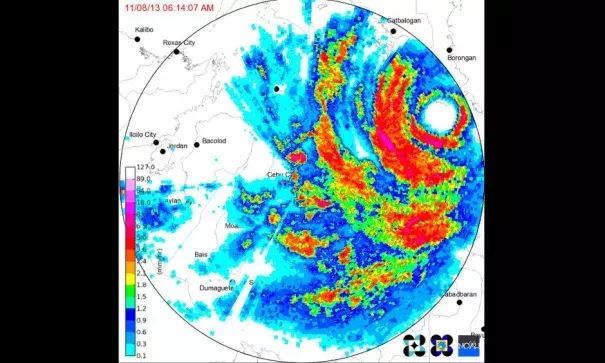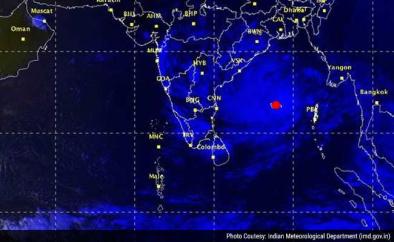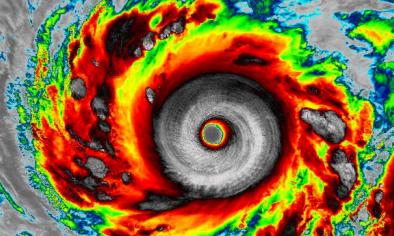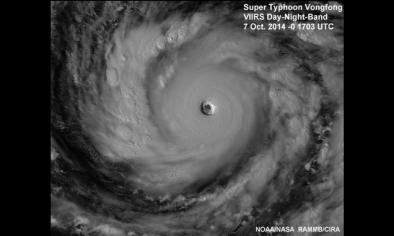Super Typhoon Haiyan: Strongest Landfalling Tropical Cyclone on Record

Super Typhoon Haiyan has made landfall. According to PAGASA, Haiyan came ashore at 4:40 am local time (20:40 UTC) November 7, 2013 near Guiuan, on the Philippine island of Samar. Fourty minutes before landfall, Guiuan reported sustained 10-minute average winds of 96 mph, with a pressure of 977 mb. Contact has since been lost with the city. Three hours before landfall, the Joint Typhoon Warning Center (JTWC) assessed Haiyan’s sustained winds at 195 mph, gusting to 235 mph, making it the 4th strongest tropical cyclone in world history. Satellite loops show that Haiyan weakened only slightly, if at all, in the two hours after JTWC’s advisory, so the super typhoon likely made landfall with winds near 195 mph. The next JTWC intensity estimate, for 00Z UTC November 8, about three hours after landfall, put the top winds at 185 mph. Averaging together these estimates gives a strength of 190 mph an hour after landfall. Thus, Haiyan had winds of 190 - 195 mph at landfall, making it the strongest tropical cyclone on record to make landfall in world history. The previous record was held by the Atlantic's Hurricane Camille of 1969, which made landfall in Mississippi with 190 mph winds.
Related Content






